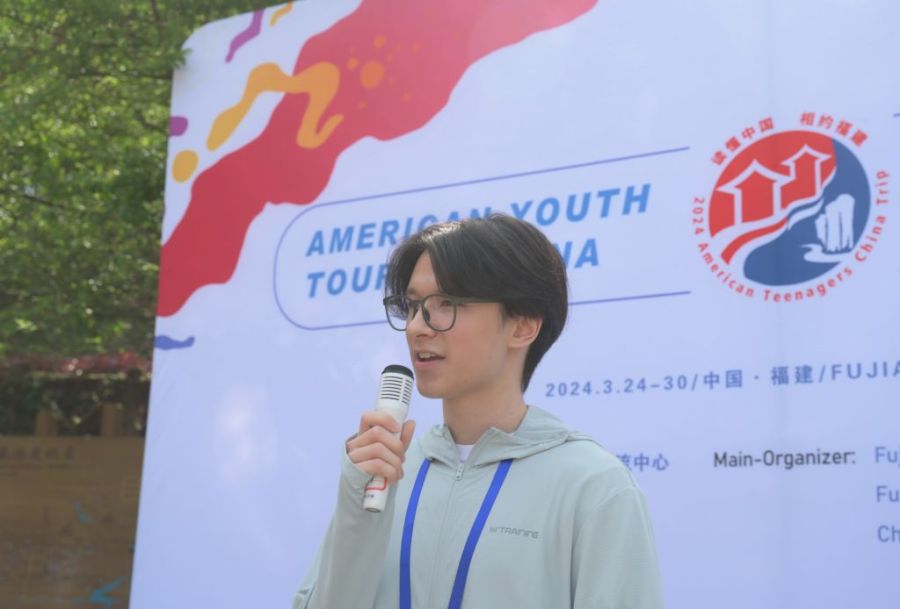
This piece is written by four graduate students who spent the 2022-2023 academic year in Beijing, China, and were among the few international students to return to China amidst the COVID-19 pandemic and after. We come from the United States, the United Kingdom, Russia and Germany, and now all work in China affairs. This article is inspired by our experiences and our worries about the future of the U.S.-China exchange at a time when it is most critical.
COVID-19 has decimated U.S.-China academic exchange. In 2023, only 700 American students were studying in China. U.S.-China exchange has become an issue of political debate within America, reflecting the heightened tensions in bilateral relations. A 2023 study found that almost three fourths of young adults in the U.S., the people most likely to study abroad, held a somewhat unfavorable to unfavorable opinion of China. This trend will hamper America’s ability to analyze China accurately and develop effective China policies.
American policymakers must therefore commit to revitalizing U.S.-China higher educational exchange. A new generation of “China hands” — well-trained experts with in-country experience — is essential to addressing security and economic challenges. Investing now in these programs will mean better China policy in the future.
Prioritizing firsthand experiences
During his trip to the APEC Summit in San Francisco in last November, Chinese President Xi Jinping announced he planned to invite 50,000 American students to China over the next five years. But it is unlikely that he will achieve his goal, as tensions have dulled American enthusiasm for China.
But strained relations should not mean losing sight of America’s need to maintain cultural understanding, language skills and firsthand experiences. Our time in China as students allowed us to do that.
In conversation with a group of Chinese students, they told us that many of them would have chosen to pursue their graduate studies in the U.S. ten years ago. Now most wanted to acquire their PhDs from leading domestic universities. In-person conversations like these helped portray that changing perceptions of the U.S.-China relationship had also influenced Chinese university students.
When stuck in busy Beijing traffic, talking with taxi drivers often made for good conversation. On the way to a jazz bar, one of them told us about hidden gems in the capital. He was curious to know where we came from and why we came to China. When we arrived at our destination, he gifted us a Beijing travel guide. Experiences like these were a common theme.
Tensions on the bilateral front persisted during our stay, such as then-House Speaker Nancy Pelosi’s (D-Calif.) visit to Taiwan, which angered China, and a Chinese spy balloon that traveled across the United States. But, in our experiences, excitement and hospitality remained on a person-to-person basis.
Revitalizing U.S.-China educational exchange
Rather than deny young students the opportunity to study abroad, Congress and policymakers should invest in the talent of the next generation of U.S.-China experts in service of the national interest.
A first is reinstating past programs, such as the China and Hong Kong Fulbright program, which was shut down in 2020 by then-President Trump through an executive order, despite recent efforts to revive the program. Since the first exchange in 1979, an estimated 3,536 Americans were sent to China through the Fulbright program until 2016 to study, research and teach.
It is important to keep investing in new programs linked to American institutions. American-Chinese joint ventures — such as the Hopkins-Nanjing Center, Duke Kunshan and NYU Shanghai — are among the few programs in China tied to U.S. institutions and present the opportunity to enhance collaboration, alongside international degree programs like Schwarzman College in Beijing.
U.S. institutions should not only offer semester or year-long programs, but also integrate study trips and language learning programs to China in their curricula. Thirty Harvard Kennedy School students recently revived their China Trek tradition, a week-long trip allowing students to gain firsthand insights in China. This kind of American confidence and adventurism should become a standard and not an exception in post-COVID exchange programs.
When it is possible, universities should invest in remote language exchange and tandem programs, as well as discussion groups, with Chinese students. Not only do undergraduate and graduate programs play a pivotal role, high school extracurricular and language learning can incentivize students to contribute to the U.S.-China relationship at a young age. These students should also be offered the opportunity to make visits to China.
These programs and opportunities are under pressure not only from a lack of numbers, but also from those negative attitudes reflected in the public opinion surveys. American students and their parents have legitimate concerns over personal freedoms, privacy and safety when choosing to study abroad. But, the Xi-Biden summit and China’s own interests make this one of the most suitable periods for Americans to take the plunge.
American students need to get back to China. U.S. policymakers can help them by increasing opportunities and funding to do so. Whether or not policymakers see eye-to-eye on China policy, all should be able to agree that America cannot deal with China effectively unless Americans gain a better understanding of the country. It is worth spending some money and taking minimal risks to achieve that goal.
Bailey Johnson serves as a Schwarzman Fellow at the National Committee on U.S.-China Relations; Daria Kurushina is a Schwarzman Fellow at the Asia Society Policy Institute; Lea Thome is a Schwarzman Fellow at the Wilson Center, affiliated with the Kissinger Institute on China and the U.S.; Chengkai Xie serves as a Schwarzman Fellow at the Chatham House.














